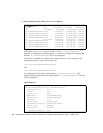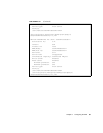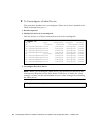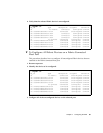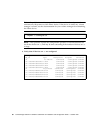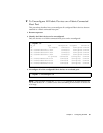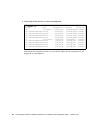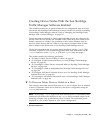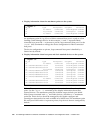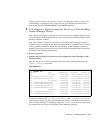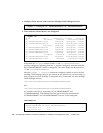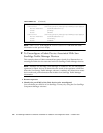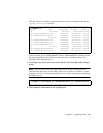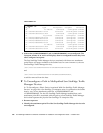
Chapter 8 Configuring the SAN 99
Creating Device Nodes With the Sun StorEdge
Traffic Manager Software Enabled
This section describes how to perform Fabric device configuration steps on a host
that has the Sun StorEdge Traffic Manager software enabled. For details on enabling
Sun StorEdge Traffic Manager software, refer to “Managing Sun StorEdge Traffic
Manager with a Volume Manager” on page 117.
The devices that are attached to Fabric-connected HBA port are not configured by
default. These devices are thus not available to the Solaris host when a host port is
initially connected to a Fabric. The procedures in this section illustrate steps to
discover Fabric devices that are visible on a host and to configure them to make
them available to the Solaris host as Sun StorEdge Traffic Manager devices.
The device information that you supply, and is displayed with the cfgadm (1M)
command, depends on your system configuration. (For more information on the
cfgadm command, see the cfgadm_fp (1M) and cfgadm (1M) man pages.)
This section contains the following procedures:
■ “To Discover Fabric Devices Visible to a Host” on page 99
■ “To Configure a Fabric-Connected Device as a Sun StorEdge Traffic Manager
Device” on page 101
■ “To Unconfigure a Fabric Device Associated With Sun StorEdge Traffic Manager
Devices” on page 104
■ “To Unconfigure a Path to Multipathed Sun StorEdge Traffic Manager Devices”
on page 106
■ “To Configure All Fabric-Connected Devices on a Sun StorEdge Traffic Manager
Enabled Host Port” on page 109
■ “To Unconfigure All Fabric-Connected Devices on Sun StorEdge Traffic Manager
Enabled Ports” on page 114
▼ To Discover Fabric Devices Visible to a Host
This example shows fibre channel host ports c0, c1, and c2 and the devices attached
to them. It illustrates Fabric device discovery and device configuration using the
cfgadm (1M) command.
Note – If the proper cfgadm support for fibre channel device is not installed, fibre
channel devices will not be displayed in the cfgadm (1M) command output. In the
following examples, only fp attachment points are listed. The attachment points
displayed on your system depend on your system configuration.
1. Become superuser.




